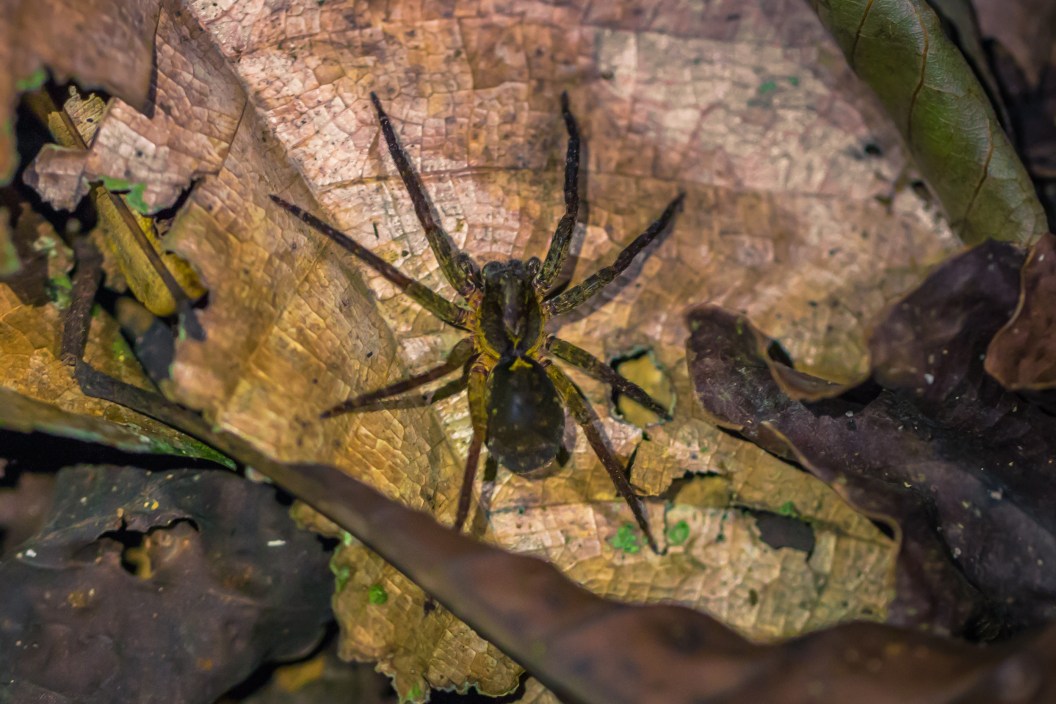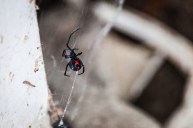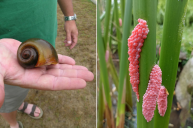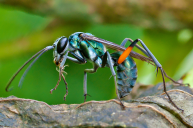One British man came back from his European cruise with a seriously terrifying story to tell: While dining with his wife of 35 years off the boat in Marseille, France, Colin Blake began experiencing pain in his foot. His wife thought it was just his new sandals rubbing, he later told BBC, but by the time they got back to the ship, his toe had turned purple.
He went to see the ship's medical team. Their answer: It looked like Blake he had been bitten by a Peruvian wolf spider—who had then laid eggs in his toe.
Blake said the medical staff flushed the pus and leaf-like objects out of the wound, patched him up, and gave him antibiotics. When the swelling subsided, Blake could see the spider bite marks for himself. But four weeks later, his toe was still bothering him so he got a second examination. Here, the doctors claimed to see something seriously disturbing: They believed one of the eggs hadn't been flushed and must've hatched, and the spider was now making its way out—"eating its way out of my toe," according to Blake.
While Blake's recount is the stuff of nightmares and his toe looks terrifying, experts are calling foul. "It just doesn't work that way," David Sissom, Ph.D., a biology professor and department head at West Texas A&M University who studies arachnids, told Wide Open Spaces. "I am not aware of any spider that lay their eggs inside hosts of any kind."
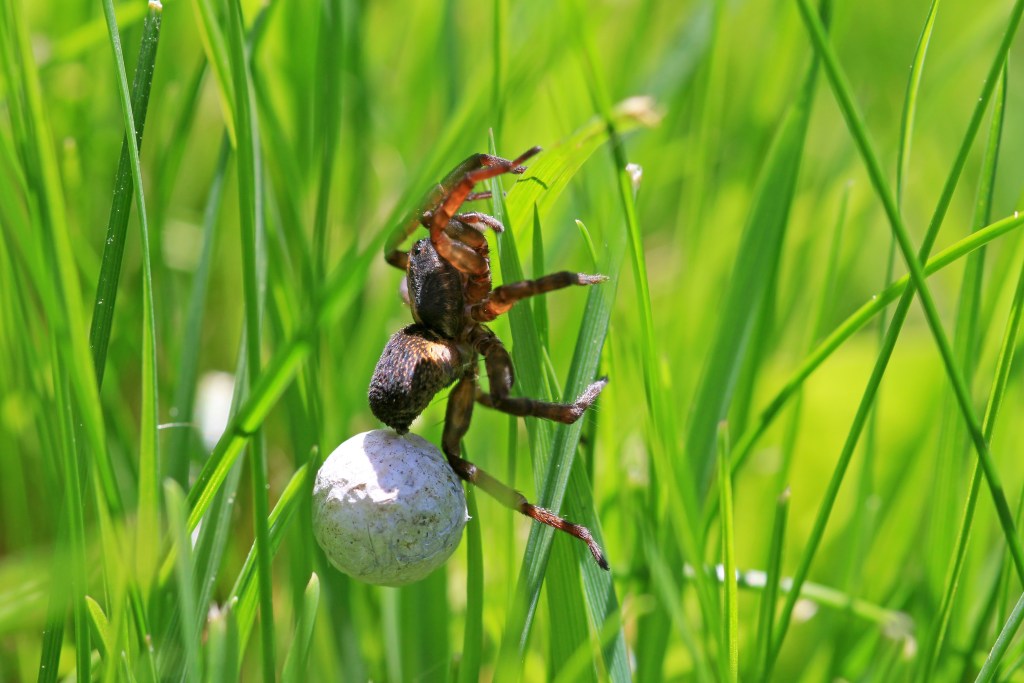
Getty Images, Astrid860
While most spiders place their egg sacks on plants, under bark, or debris, wolf spiders have a unique method of carrying their young.
"Wolf spiders deposit their eggs in a silken egg sac that remains attached to a female's spinnerets at the end of her abdomen," says Sissom. "They emerge from the egg sac usually after several weeks and climb onto the female's back until they accomplish a molt that allows them to assume an independent existence. They stay on the female's back for a short while before dispersing."
Arachnidologist Eileen Hebets, Ph.D., biology professor at the University of Nebraska who studies, in part, reproductive behavior in wolf spiders in her lab, told Wide Open Spaces that she agrees, adding that wolf spiders take about three weeks to hatch.
According to the Missouri Department of Conservation, female wolf spiders are very protective of their egg sacks and become frantic in their search when separated, making it seem very unlikely that one would lay their eggs in a human. "Wolf spider bites can be somewhat painful and lead to redness, itching, and local swelling," says Sissom. "They are not regarded as dangerous."
Another red flag: Blake said he doesn't remember actually getting bit by a spider, but Hebets told us: "Everyone I know that was bitten by a wolf spider felt it."
Sissom did say that it's a possibility that Blake's toe had a secondary infection due to the wound not being well cared for, which caused his pain and second trip to the doctor four weeks after the initial injury. But neither he nor Hebets sees how a single egg could have been left behind. Furthermore, Hebets emphasized, "I don't see a way that a wolf spider could lay an egg in a human."
While it's not clear what actually happened to Blake, you can rest assured: Both experts agree that wolf spiders aren't crawling around laying their eggs in unsuspecting diner's feet.
READ MORE: Why Venomous Black Widows Are Being Spotted All Over Colorado
